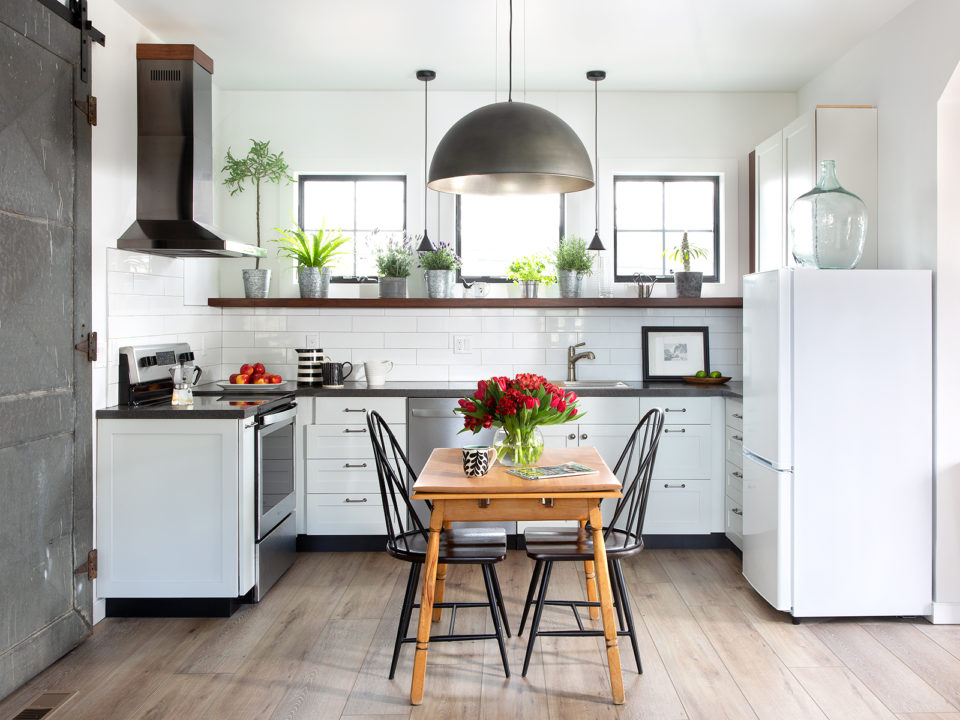The Local newsletter is your free, daily guide to life in Colorado. For locals, by locals. Sign up today!
You might know them as granny flats, carriage houses, or casitas, but their official, not-so-sexy name is “Accessory Dwelling Units” or ADUs. Built on the same property as primary residences, these sidekick spaces can serve as suites for visitors or aging parents, or as rental properties for homeowners looking to make some extra cash. Flirting with the idea of adding an ADU to your slice of Denver? We distilled expert advice to help you avoid the potential pitfalls and reap the (many!) benefits.
First, determine how big your property is. (You probably have this info in your annual property tax statement from the city.)
Go to denvergov.org/zoning to access the zoning code and a link to a city map, which will allow you to determine your zone district. With this information and your lot size on hand, you’ll be able to figure out if an ADU is allowed in your neighborhood. Tip: If you have a “TU” in your zone district or a “1” at the end of it, you’re in luck.
But keep in mind that zone districts don’t always follow the same rules: “In some neighborhoods, you can build an ADU on a smaller lot [than would be permissible in other neighborhoods],” says Amir Abu-Jaber, an architect with Denver’s Community Planning and Development Department.
Dive into the zoning code (Whee!) to determine 1) if your property is big enough to have an ADU and 2) the size and shape of the ADU that’s allowed in your zone district. You might want to enlist help from a builder or architect who has experience in ADUs—and you can contact the Residential Plan Review Staff for help. (Reach them at residentialpermits@denvergov.org.) The group even offers in-person meetings to help you sort out the details of what’s permissible on your property, says
senior city planner Brandon Shaver.
Remember: These units are meant to be secondary—that’s the “accessory” part of their name—to the main property. “The zoning code aims to preserve the single-family feeling of a neighborhood,” Abu-Jaber says.
Experts: Amir Abu-Jaber, architect, and Brandon Shaver, senior city planner for the Planning Services Division, both with Denver’s Community Planning and Development Department
Ground Rules
The city says…
- Your ADU has to have its own address.
- If you’re in a single-unit zone district (read: you live in a stand-alone house), you (the owner) have to live on-site, either in the primary residence or in the ADU.
- Whenever feasible, the dwelling’s utilities have to be shared with the primary house.
- You’re going to pay almost all of the same permitting fees as you would if you were building a primary residence. (Bummer, we know.)
- In single-unit zone districts, you can’t sell your ADU separately from the main property (no, not even to Granny).
- You may not put the “I” in DIY and build your own ADU—unless you’re a licensed general contractor. Only GCs are allowed to construct these units in Denver.
Great Expectations
Sarah Senderhauf of L&D Construction, which specializes in building ADUs in the metro area, reveals her hard-won wisdom about granny flats.
Give It Some (Fore)Thought
“I tell clients to ask themselves: What’s my use [for the ADU] going to be now? What’s it going to be in five years? You want the ADU to be able to change with your family’s needs. Say you have kids and you need a nanny now, and down the road, your parents will be older and you want them to be closer. Will they be able to live in the ADU comfortably? For example, maybe you want a design with a wider interior staircase so that you can get a chair lift in there [for older parents] one day. Thinking ahead now saves a lot of time and money later.”
Experience Counts
“There are a lot of wonderful architects [in our community]; I recommend making sure whoever you work with has experience with ADUs. Ask your architect or contractor how many they’ve built. Ask them to explain the zoning code for your neighborhood. I see people spend money to have an ADU designed, and when I open the plans, I know right away that it’s not going to pass the zoning code [requirements].”
Take A Page From History
“I love building in historic districts, like Baker and Curtis Park. They’re very pro-ADU because ADUs are historical. But you should pay attention to design requirements because the code is a little more specific there than in other Denver neighborhoods.”
Short-Term Rental, Long-Term Benefits
“The city’s [comprehensive development plan], Blueprint Denver, recommends allowing ADUs throughout [residential areas of] the city. I think that would be a great policy. We sometimes hear city council members suggest limiting short-term rentals as an approved ADU use, but our feeling is that those short-term rentals allow homeowners to pay down their loans quickly, and then they move to renting the ADUs long-term. And that adds more affordable housing in the city. It’s not the only solution, but it’s a part of the solution.”
It Takes Money, Honey
“We tend to think of the cost [of building an ADU] using a project-based budget, not on a per-square-foot basis. Remember: You’re building a small home in your backyard. It’s going to have a kitchen, a bathroom, probably a laundry room. You need every trade”—so there’s not a lot of economy of scale.
$240,000 to $325,000: The typical price range for an ADU built by L&D Construction









